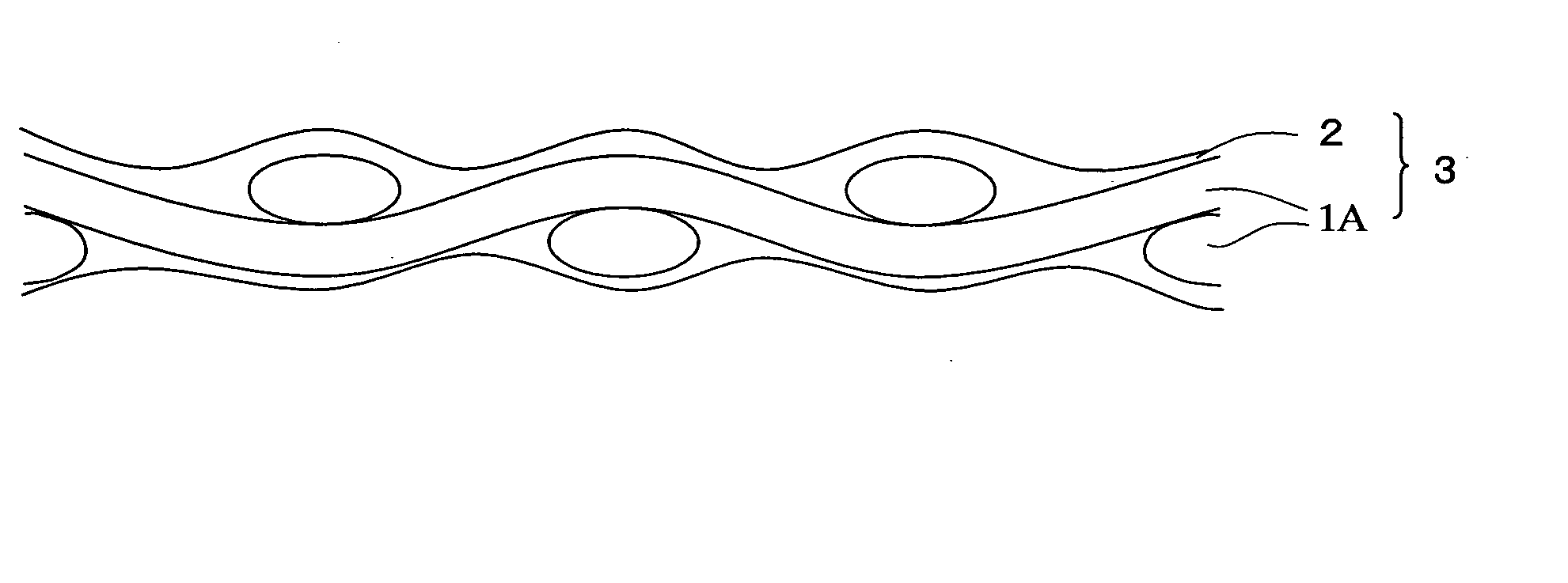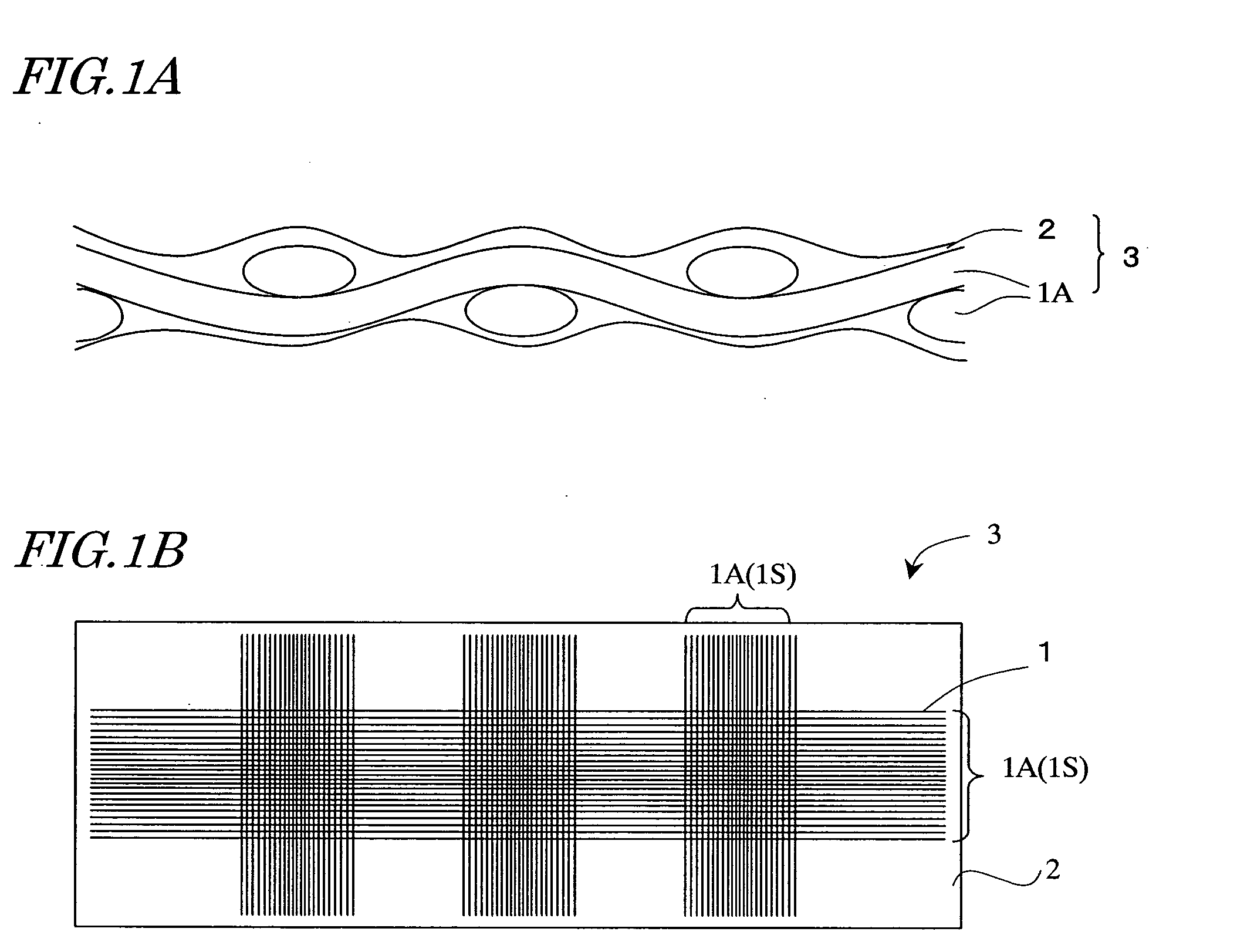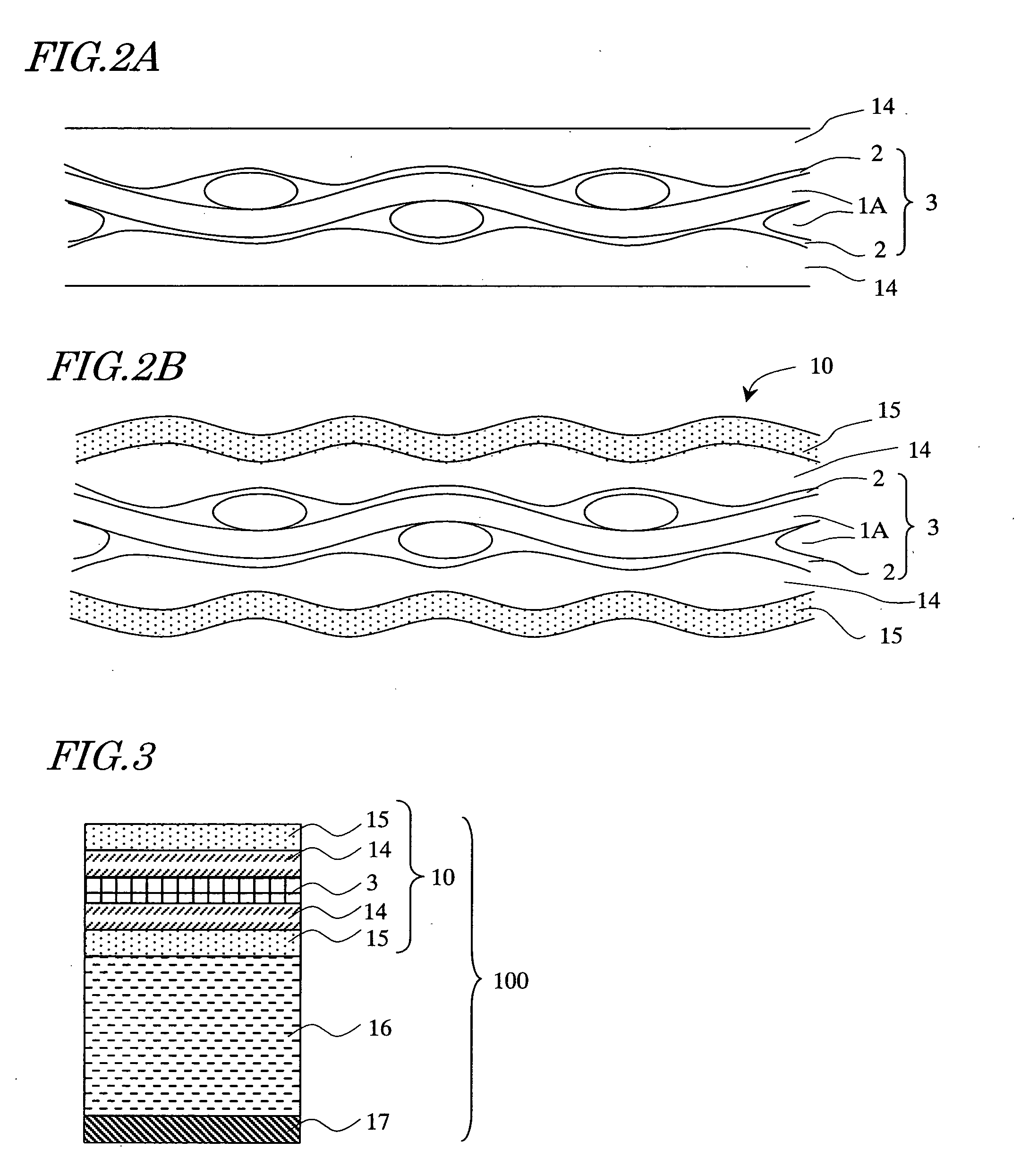Display device
a display device and display technology, applied in the direction of identification means, sustainable manufacturing/processing, instruments, etc., can solve the problems of high linear expansivity of plastic substrates, difficult fabrication of drive elements, tfts, etc., and achieve the effect of preventing occurrence and high-quality display
- Summary
- Abstract
- Description
- Claims
- Application Information
AI Technical Summary
Benefits of technology
Problems solved by technology
Method used
Image
Examples
Embodiment Construction
[0027] As mentioned in the prior art description, the present inventors have found a phenomenon that when an inorganic barrier layer is deposited on the surface of a planarizing film of a composite substrate having given flatness, the flatness is lost and unevenness develops on the surface of the inorganic barrier layer. This phenomenon will be described with reference to FIGS. 1A, 1B, 2A and 2B.
[0028]FIGS. 1A and 1B are a cross-sectional view and a plan view, respectively, diagrammatically showing part of a resin-impregnated glass fiber fabric 3.
[0029] The resin-impregnated glass fiber fabric 3 shown in FIGS. 1A and 1B includes a glass fiber fabric 1S and a resin layer 2 covering the glass fiber fabric 1S. The glass fiber fabric 1S is a plain-woven fabric of fiber bundles 1A each composed of a plurality of glass fibers 1. By dipping the glass fiber fabric 1S in an epoxy resin, for example, the resin layer 2 is formed as a thin film covering the surfaces of the glass fiber bundles...
PUM
| Property | Measurement | Unit |
|---|---|---|
| Temperature | aaaaa | aaaaa |
| Temperature | aaaaa | aaaaa |
| Area | aaaaa | aaaaa |
Abstract
Description
Claims
Application Information
 Login to View More
Login to View More - R&D
- Intellectual Property
- Life Sciences
- Materials
- Tech Scout
- Unparalleled Data Quality
- Higher Quality Content
- 60% Fewer Hallucinations
Browse by: Latest US Patents, China's latest patents, Technical Efficacy Thesaurus, Application Domain, Technology Topic, Popular Technical Reports.
© 2025 PatSnap. All rights reserved.Legal|Privacy policy|Modern Slavery Act Transparency Statement|Sitemap|About US| Contact US: help@patsnap.com



